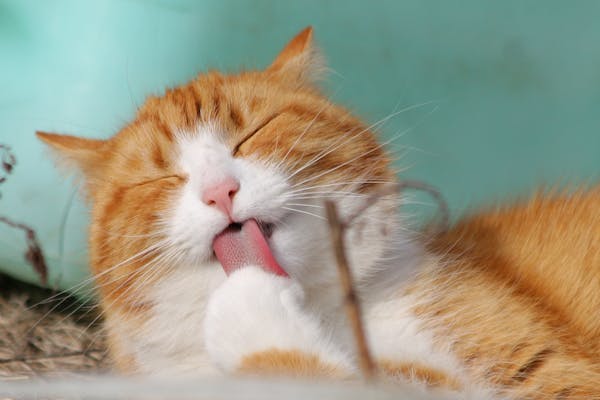Choosing the right food for your cat is essential for ensuring their long-term health and well-being. Cats have unique nutritional needs, and the quality of their diet plays a critical role in their overall health. Whether you are a first-time cat owner or looking to improve your feline’s diet, this guide will help you make informed decisions.
1. Understand a Cat’s Nutritional Needs
Cats are obligate carnivores, which means their bodies are designed to thrive on a meat-based diet. Unlike dogs, they cannot efficiently digest plant-based proteins. Cats require specific nutrients that are primarily found in animal products, including:
- Protein: Cats need a higher amount of animal-based protein than many other pets. The primary source of protein should come from real meat, such as chicken, turkey, or fish.
- Taurine: An essential amino acid for cats, taurine is critical for heart health, vision, and reproduction. Since cats cannot produce enough taurine on their own, it must be included in their diet through meat sources.
- Fat: Healthy fats are important for energy and maintaining healthy skin and a shiny coat. Omega-3 and omega-6 fatty acids are particularly beneficial.
- Vitamins and Minerals: Cats need certain vitamins and minerals to support their overall health, including vitamin A, vitamin D, calcium, and phosphorus.
- Water: Hydration is key for cats, especially since they often don’t drink as much water as they need. Wet food can help maintain proper hydration levels.
2. Types of Cat Food
When it comes to feeding your cat, there are three main types of food to consider: dry food, wet food, and raw diets. Each has its advantages and drawbacks.
Dry Food (Kibble)
Dry food is convenient and affordable, but not all brands offer high-quality nutrition. When choosing kibble, look for these factors:
- High in protein: Ensure the first ingredient is real meat, not a meat by-product or grain.
- Low in carbohydrates: Cats don’t need a lot of carbs, so avoid foods with fillers like corn, wheat, or soy.
- Balanced nutrients: Make sure the food contains essential vitamins, minerals, and fatty acids.
Wet Food (Canned)
Wet food has a higher moisture content, making it an excellent option for hydration. It tends to be more protein-rich and mimics a cat’s natural diet better than dry food. When choosing wet food, consider:
- Quality protein sources: Look for real meat as the first ingredient.
- Low carbohydrate content: Wet food should have minimal fillers or grains.
- Hydration benefits: The high moisture content helps prevent urinary tract issues and keeps your cat hydrated.
Raw or Homemade Diets
Some cat owners prefer raw or homemade diets, which can closely mimic what a cat would eat in the wild. However, these diets require careful planning to ensure they meet all of a cat’s nutritional needs. If you’re considering this option, it’s best to consult with a veterinarian or pet nutritionist to ensure the diet is complete and safe.
3. Read the Ingredient List
The ingredient list is the best way to understand what’s really in your cat’s food. Here’s what to look for:
- First ingredient: real meat: The first ingredient should always be an animal-based protein, like chicken, turkey, or salmon.
- Avoid artificial additives: Stay away from foods that contain artificial colors, flavors, or preservatives. These additives can cause allergies and other health issues over time.
- Grain-free options: While not every cat needs a grain-free diet, some cats are sensitive to grains. Grain-free formulas can reduce the risk of digestive issues or food intolerances.
4. Consider Your Cat’s Life Stage
Your cat’s age, size, and activity level will affect their nutritional requirements. Most commercial cat foods are formulated for specific life stages, such as:
- Kitten Food: Higher in calories and nutrients to support growth and development.
- Adult Cat Food: Balanced for maintenance, with moderate protein and fat levels.
- Senior Cat Food: Often lower in calories and higher in joint-supporting nutrients like glucosamine.
Always choose a food that corresponds to your cat’s life stage to ensure they are getting the right amount of calories, protein, and essential nutrients.
5. Account for Special Dietary Needs
Some cats have special dietary needs due to health conditions or allergies. Common issues include:
- Food Allergies: If your cat is allergic to certain ingredients, look for limited-ingredient or hypoallergenic foods that avoid common allergens like chicken, beef, or grains.
- Weight Management: If your cat is overweight, choose a weight-control formula with fewer calories and more fiber to help them feel full.
- Sensitive Stomachs: For cats with digestive issues, opt for foods that are easily digestible and formulated for sensitive stomachs.
6. Consult Your Veterinarian
While researching and reading labels is important, it’s always a good idea to consult with your veterinarian when making decisions about your cat’s diet. A vet can assess your cat’s individual health needs and recommend the best food options based on their age, weight, activity level, and any medical conditions.
7. Avoid Overfeeding and Provide Fresh Water
Proper portion control is key to maintaining a healthy weight for your cat. Overfeeding can lead to obesity, which increases the risk of diabetes, joint problems, and other health concerns. Follow the feeding guidelines on your cat food packaging, but adjust based on your cat’s needs and your vet’s recommendations.
Ensure your cat has access to fresh, clean water at all times. Even if they are eating wet food, additional water is vital to support kidney function and prevent urinary tract infections.
Conclusion
Choosing the best food for your cat’s health involves understanding their unique nutritional needs, reading food labels carefully, and considering factors such as age, weight, and any special health concerns. Prioritizing high-quality, protein-rich, and species-appropriate foods will support your cat’s overall well-being, ensuring they live a long and healthy life. Always remember to consult with your veterinarian to ensure your chosen diet meets your cat’s specific needs.

